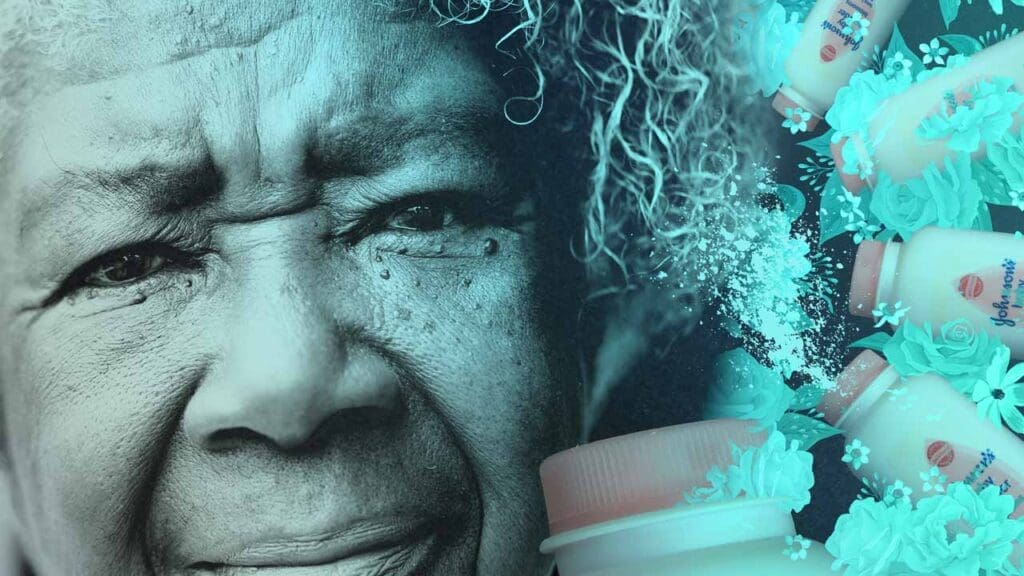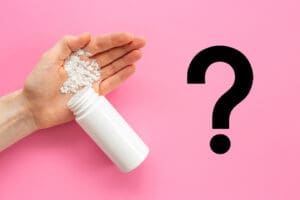Talc is a mineral substance used in some of the most common cosmetic and beauty products on the market, including baby powder. It’s possible for the substance to become contaminated with asbestos. Long-term use of talc products has been linked to an increased risk of ovarian cancer, lung cancer and mesothelioma since the 1970s.
What are the Risks?
Female Hygiene: Possible increased risk of ovarian cancer
Inhalation: May lead to lung damage, lung cancer, mesothelioma
The History of Talcum Powder
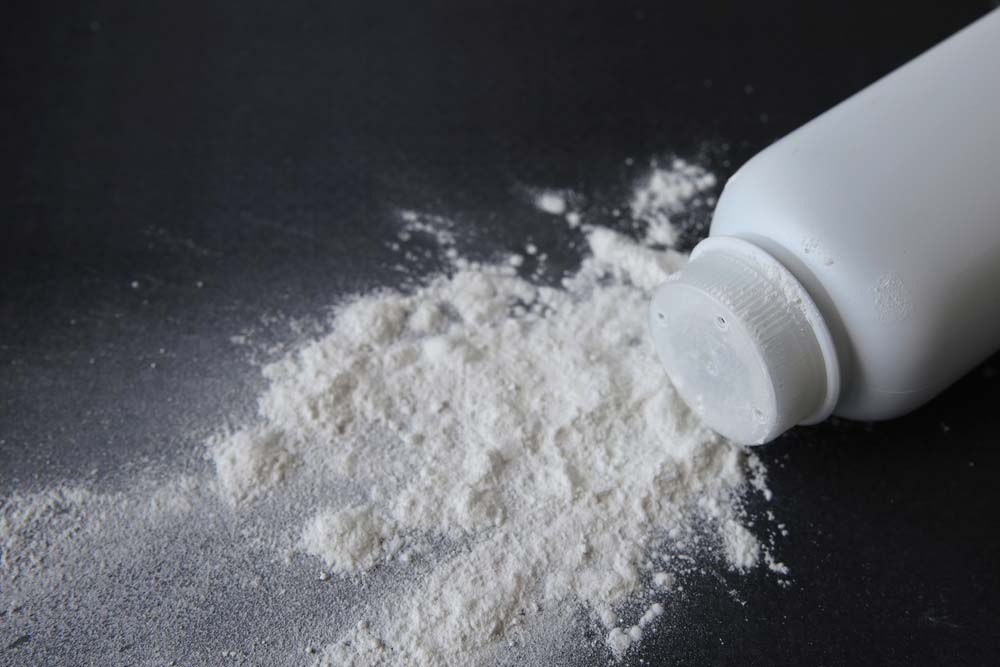
Talc is a mineral substance used in some of the most common cosmetic and beauty products on the market, including talc-based baby powder, often to help absorb moisture. It can be industrially produced or mined from the earth. If great care is not taken when mining talc, it’s possible for the substance to become contaminated with asbestos.
For decades, scientists have raised red flags about the possible health issues stemming from prolonged exposure to asbestos in talc-based products, leading to a surge in talc litigation. In the early 1970s, researchers linked the long-term use of contaminated talc products like baby powder for feminine hygiene to an increased risk of ovarian cancer. Talc has also been associated with an elevated risk of lung cancer and mesothelioma due to asbestos-contaminated talcum powder.
Even as organizations like the FDA research the relationship between talc and cancer, manufacturers continue to produce talc-based products without warning consumers of the possible risks associated with its use, resulting in a rise in talc lawsuits. This has set off a wave of legal actions from cancer patients who believe their diagnosis stems from the prolonged use of talcum powder and talc-based products. A landmark case was fought and won in 2016 when Johnson & Johnson was ordered to pay $72 million in damages to the family of a woman whose death from ovarian cancer was linked to the use of their powder, highlighting the urgency of talcum powder litigation and the need for talcum powder attorneys to address talcum powder cases and secure talcum powder settlements for affected individuals.
Other Names for Talcum Powder
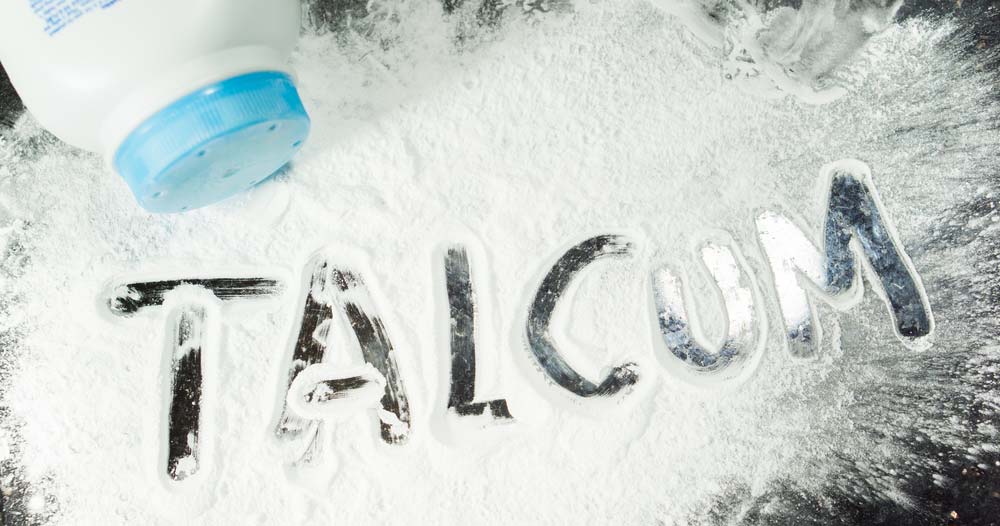
If a product contains talc, you may see it listed in the ingredients as talc, talcum, talcum powder, cosmetic talc, or magnesium silicate.
Proper Use of Talc Powder

Talc is added to a wide array of common cosmetic and personal care items, making it a household staple among consumers for almost a century. Because research is still being done to understand the possible link between talc powder and certain types of cancer, pay attention to any warning labels on talc-based products you use.
Avoid inhaling talcum powder and getting it in your eyes. Always shake out powder directly into your hand, away from your face. Rather than putting powder directly on your genitals, gently pat a light layer on the skin around them.
#WeAreTheMany
Possible Side Effects of Talc

There are some adverse health effects of talc powder when not used properly. For example, inhaling the substance can result in respiratory issues like coughing and wheezing.
Can You Overdose on Talcum Powder?

Inappropriate use of talc-based powders can lead to severe pulmonary complications. Most commonly, inhaling too much of the substance can lead to respiratory distress or even death, especially in infants.
J&J Talc-Based Powders Discontinued
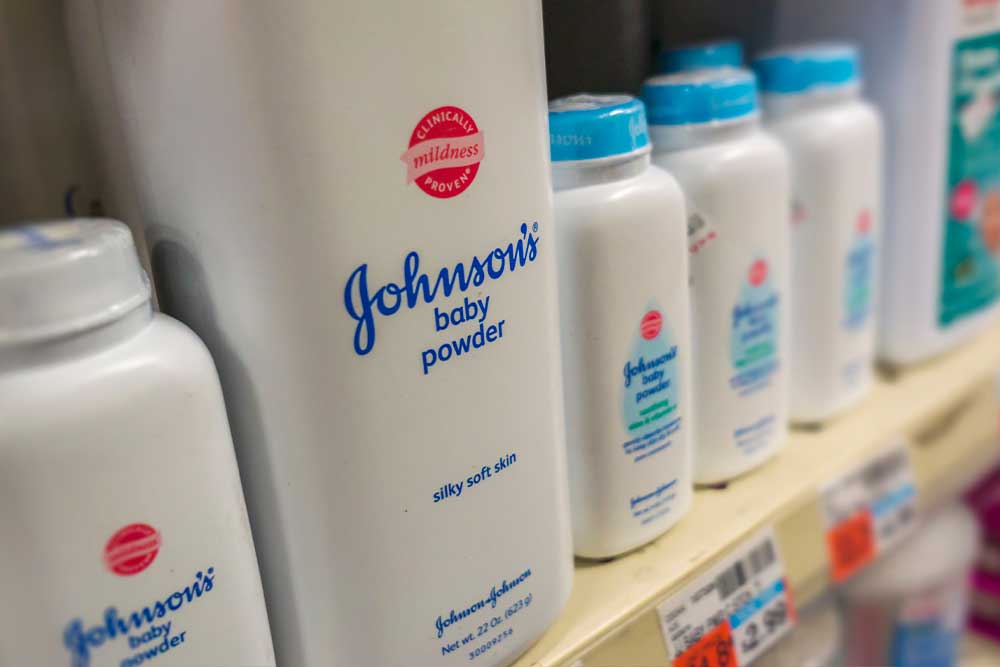
In May 2020, Johnson & Johnson announced it would discontinue its talc-based powder products in the United States and Canada. This followed a voluntary recall of 33,000 bottles of baby powder in the U.S. after the FDA reported finding trace amounts of asbestos in the product. J&J retested its baby powder and reported finding no signs of asbestos.
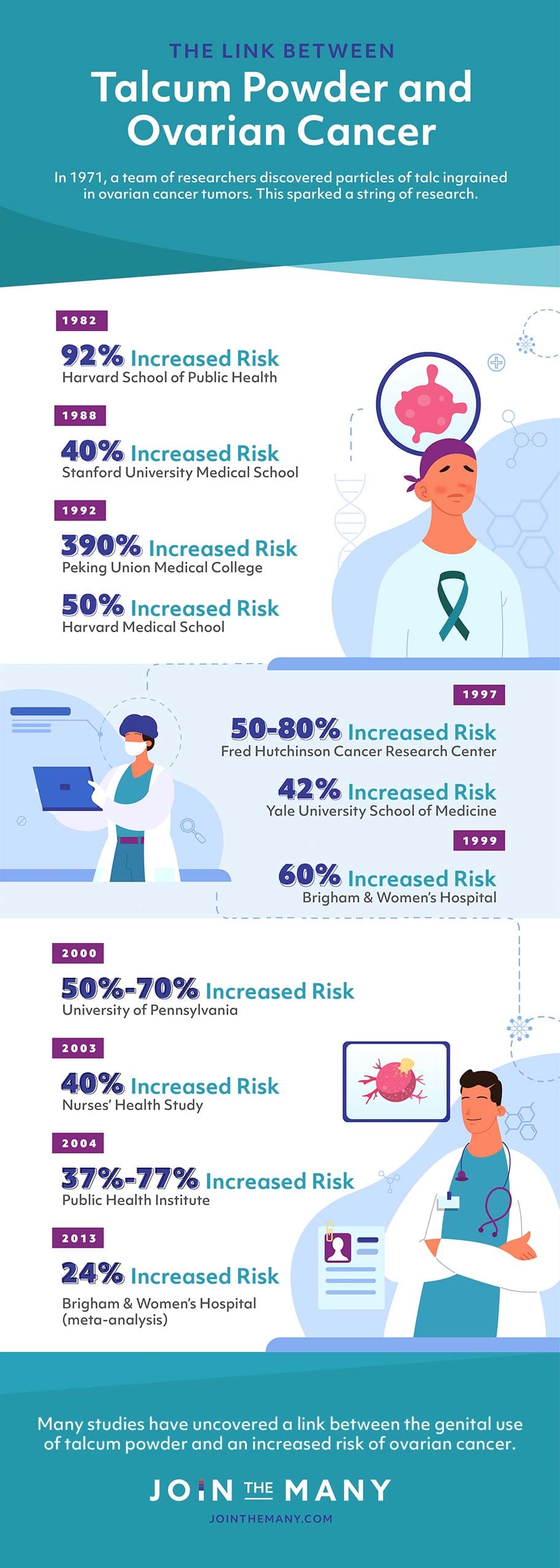
Doctors’ Sentiments on Talc

Research continues to definitively link talc-based products to certain cancers, including an increased risk of ovarian cancer. Some physicians encourage consumers to exercise caution when using talcum powder until they fully understand the risks, especially women who are using the product around their genitals.
Dr. Daniel Brietkopf, an expert in obstetrics and gynecology at the Mayo Clinic, stresses: “There is some evidence that talc particles may migrate through the genital tract, through the uterus and fallopian tubes, thus exposing the ovaries and lining of the pelvic organs to the substance. Whether talc particles cause, ovarian cancer has not been definitively proven by scientists. Given the uncertainty regarding talc, it seems prudent to limit its use in the genital area.”

Alternatives to Talcum Powder

In addition to talc-free baby powders, cornstarch, arrowroot, and tapioca powders, oat flour, baking soda and zinc-based diaper rash creams may serve as suitable substitutions for talc powder.
Talc Powder Lawsuits & Settlements

Legal decisions involving talcum powder have been making headlines for years, including a major $72 million settlement in 2016. During the landmark case, Johnson & Johnson was ordered to pay damages to the family of a woman whose death from ovarian cancer was said to have been caused by using the company’s baby powder.
J&J has suffered multiple legal defeats in court, totaling hundreds of millions. Most recently, the U.S. Supreme Court rejected the company’s appeal to contest a $2 billion verdict awarded to 22 women who claim talc powder led to their cancer diagnosis. Litigation continues full steam ahead, with over 37,000 remaining cases stemming from asbestos contamination from talc products.
Baby Powder Lawsuit Settlements
If you believe you have a qualifying case, Join the Many is here to provide a free, no-obligation case review to determine if you may be eligible for a settlement. If you are, we’ll carefully match you with the best attorney for your case. There are no legal fees unless you win compensation. Contact us today to get started.
Trusted Sources on Talcum Powder
For more information on talc, its uses, safety, and the possible link to cancer, visit these trusted sources:

